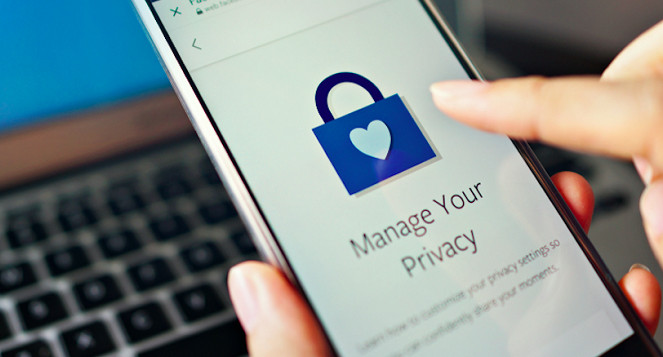Social media has become an integral part of everyday life. It allows people to express their opinions, connect with friends, and form online communities. However, the sheer amount of personal information stored on these sites is increasing privacy concerns. Most people don’t know how much of their data is public and how others can use it. The first step to protecting your identity, personal information, and digital footprint is learning how to use social media privacy settings. These settings allow you to choose what information you share and who can see it.
Why Privacy on Social Media Matters
Protecting your privacy on social media is crucial because people can use the information you post in ways you never expect. Cybercriminals or malicious actors can use your personal information, such as your date of birth, address, and even your workplace. People who don’t pay attention to their privacy settings often face identity theft, fraud, and harassment. Privacy isn’t just about security; it also affects the level of control you have over your life. The less information you share, the less likely you are to receive unwanted attention and be at risk.
Using Privacy Settings
You can use your privacy settings to control how your information is shared across all social media sites. These settings let you decide who can see your profile, posts, and photos. For example, you can share updates only with your friends instead of with everyone. Some settings also let you choose whether your profile appears in search results, whether you can be tagged in photos, or whether advertisers can show you relevant ads based on your activity. By understanding how privacy settings work, you can take control of your online experience and limit your exposure to strangers or companies.
Managing Your Profile’s Visibility
Limiting who can see your profile is one of the simplest and most powerful ways to manage your privacy. If your profile is public, anyone can see your information, photos, and posts, even if they’re not your friends. You can regain control of your online visibility by making your account private or by choosing who can see your profile. This is crucial for young people or anyone who wants to keep their work and personal lives separate. By managing visibility, you ensure that only people you trust see your private information.
Managing Post Sharing
You can control who can see your social media posts each time you post. Depending on your privacy settings, you can share photos, status updates, or videos with only your friends, a specific group, or the public. By controlling who can see your posts, you can discourage oversharing and reduce the chance of strangers seeing your content. Maybe you don’t want colleagues to see your personal vacation photos, or you only want to share certain updates with close family. You can protect your privacy and gain more freedom by using custom audiences.
Managing Tags and Mentions
Many websites allow others to tag you in photos or talk about you in articles. This feature can be fun, but it can also expose your information to people outside your circle. Most social media sites allow you to preview tags before they appear on your profile, which is a good thing. You can prevent unsolicited photos or mentions from appearing in your network by enabling this feature. This control is important because even if you post carefully, others can still share content that could compromise your privacy.
Sharing Your Location and Activity
Social media sites often want users to share their location or activities in real time. Checking in at a restaurant or posting about your vacation destination might seem like a beneficial idea, but this information can be used for malicious purposes. People can see where you live, when you’re not at home, and even your daily activities if you share your location publicly. You can use your privacy settings to disable location tracking or limit who can see this information. Controlling when and where you share your location and activity is a great way to stay safe.
Ad Preferences and Data Sharing
How advertisers use your data is another aspect of social media privacy. Platforms often collect your interests, activities, and browsing history to show you tailored ads. Some users might not mind, while others prefer not to collect too much data. You can usually adjust your ad choices and limit targeted tracking in your privacy settings. This might not eliminate ads entirely, but it does give you more control over your online experience and prevent companies from collecting too much data.
Raise Awareness and Develop Safe Habits
Even if your privacy settings are very strict, you should still stay safe online. Think carefully about what you share, avoid posting private information, and think twice before accepting friend requests from strangers. Privacy settings have limited capabilities, so awareness is just as important as technology. By using strong privacy settings and taking responsibility, you can create a safer online environment for yourself and your friends. Educating friends and family about privacy is also advantageous, as it makes the community safer and reduces risks.
Conclusion
Social networks are fun and useful, but without the right privacy settings, they can also put you at risk. Knowing how to use online privacy settings allows you to choose what information you share and who can see it. These settings safeguard you by limiting access to your profile and posts, your location, and the advertisements you encounter. But technology alone isn’t enough; you also need to understand and practice safe online behavior. You can use social media and protect your personal information by staying up-to-date and checking your settings regularly.
FAQs
1. Why are social media privacy settings important?
They’re crucial because they help protect your data and reduce the risk of identity theft, scams, and unwanted information leaks.
2. How often should I verify my privacy settings?
It’s best to examine your settings every few months, as platforms often change their policies and add new features.
3. Can advertisers see my private information?
Advertisers can access information based on your behavior, but you can control the amount of information they share through privacy settings.
4. Is it okay to share my location on social media?
It’s safer not to share your real-time location with the public, as this could reveal your daily routine or the times you’re away from home.
5. Are privacy settings a foolproof way to stay safe?
No, but they can significantly reduce the risk. The easiest way to stay safe on social media is to use privacy settings and maintain safe online habits.




